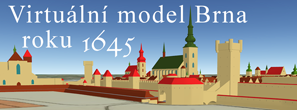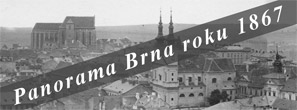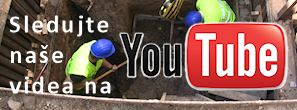Processing of field documentation by means of the STRATUM application
STRATUM database
Methodics at the turn of the 1980s-1990s
At the turn of the 1980s-1990s a “small revolution” took place in the field of methodics, above all of the documentation of finding situations. After some start-ups in 1989 and 1990 there was in 1991 for the first time in Moravia, thanks to R. Procházka and in cooperation with J. Frolík from the Institute of Archaeology of the Czechoslovak Academy of Sciences in Prague, the field documentation adapted to the British model of so-called form or contextual archaeology named "Harris’ stratigraphic method"Particular stratigraphic units are designated here by immutable numbers within numeric rows, which assumes an optimal bond between movable finds, written and graphic documentation. However, for the time being there was no transfer performed of any field written records into the database form, and the archaeological finds had been numbered within the framework of a sequence of inventory numbers assigned by the Brno City Museum.
First attempts at database processing (1993-1997)
From 1993 the first attempts started at an electronic processing of field documentation recorded through the method of contextual archaeology. At first the forms had been transcribed into the text editor T602, which appeared in a long-time view fully ineffective. In 1993-1996 therefore simple databases (card registers) in the software K602 had been used created by R. Zatloukal. Within the framework of any excavation they created files for particular kinds of stratigraphic units. This simple card register was adapted mainly to printed outputs into finding reports and to simple search, however, working with this program was very problematic and long-time unperspective. In 1993/1994 the undergraduate P. Švehla from the Brno University of Technology made a promissing attempt at creating a proper database of stratigraphic units in the environment of FoxPro 2.0 but, unfortunately, this attempt remained totally idle just before being finished. In 1996 Markem Peškou created one database file containing six tabs pertaining to particular stratigraphic units (deposit, cutting, contact area, wall, wood) that opened the development of proper application in the environment of MS Access 2.0. At the end of 1996 and the beginning of 1997 they gradually added into this file some newly created tabs restricted for the registration of archaeological actions, picture and photo documentation, inventory of finds, structures and investigated areas. Herewith a basis was set out for the development of a database containing all records (information) bound on particular archaeological actions in one single file. The first version of this database was named Kontext 1.0 makro.
Since the Brno department was founded in 1997, the company Archaia at all its excavations paid attention to a standardisation of digging methodics and processing of any results of archaeological actions. From the very beginning of the 1990s at the excavations in Brno and following evaluation they used the so-called „Harrisova stratigrafická metoda“ , and as a methodical basis a British manual had been used since 1991, translated and adjusted originally by J. Frolík from the Institute of Archaeology of the Czechoslovak Academy of Sciences in Prague, in the 1990s several times innovated. Also the forms of stratigraphic units underwent several graphic and partly also contentual modifications during the 1990s. At the workplaces of the Institute of Archaeology of the Czechoslovak Academy of Sciences in Prague and the Institute of Archaeological Research and Preservation of Historical Monuments in Brno this form of documentation had been used only by a narrow group of workers (R. Procházka, R. Zatloukal, D. Merta, M. Peška), namely at the excavations in towns (Brno, Jihlava, Uherské Hradiště, Jemnice etc.). One of the impulses to the foundation of the Brno department of the company Archaia in 1997 was therefore an effort at unifying the methodics and creating a standard for archaeological research within the framework of one and the same organisation or workplace. This aim succeeded, and from 1997 to 2000 they used within the scope of the workplace a modified manual from the 1990s. As the method of form archaeology is adapted to processing of a larger amount of field information, with the development of computer technique in the 1990s there was an effort to process this information electronically. The first attempts they performed at the Institute of Archaeological Research and Preservation of Historical Monuments in Brno in 1993 already (see above) but the information from particular excavations had been recorded and archived all the time in separated database files within the framework of SW ACCESS 2.0. Since the workplace Archaia emerged, all the information had been recorded in one single database file Kontext 2.0 created within the scope of the program ACCESS 2.0. Since that time the directional information is represented through the numbers of actions, the sequence of which begins every year from one again (1/97 to X/97; 1/98 to X/98). The database used in 1997-2000 contains basic data on excavations and the information with a direct bond on field work, mainly the registration of stratigraphic units as well as the stratigraphic relations of finds, drawings and photo documentation. In 1998 this information was added by a data sheet of interpretational character and a higher structure, later renamed to clusters of stratigraphic units. Considering the time period, the database application created had a comfortable user operating environment for recording, searching and printing of particular data, all tables were linked one with the other in so-called relation database model ensuring the data consistence.
STRATUM database
In 1999 to 2000 a work group was established within the framework of the civil association Archaia aiming a unification of the Brno and Prague methodics being slightly different. The result of this almost two-year work was a new terrain manual and a joint version of the database named STRATUM. Besides introducing the term ‘clusters of stratigraphic units’ the most radical change was probably the replacement of stratigraphic units ‘wall’ and ‘wood’ by a new type called ‘construction’ (masonry, timber…) and ‘construction element’. Nowadays the database operates under MS Access 2000 having a user-friendly environment, which enables a comfortable recording, searching and printing. All information recorded in total 17 tables is logically linked in a relation data model. Today there are two versions of the database – the one from Brno is older and the other from Prague comes from 2003. The Prague version was adjusted on the basis of requirements of the colleagues from the National Institute for Protection and Conservation of Monuments and Sites, regional workplace in Prague. Within the framework of the Stratum application runs also the export of data into the program ArchEd 1.0, which is made for evaluation of stratigraphic relations. In the Brno department the database is accessible within the scope of a computer network and the data of all actions until 2000 are stored in one single file. It is to remark that though the complete database contains about 150 000 items today, yet it is used above all to registration purposes connected narrowly with the elaboration of finding reports. In the case of many data there is no full verification or completing performed due to lack of time within the processing phase, and from among dynamic tools so far only a simple search is used, or export into the program ArchEd. At the excavations of the company Archaia Brno they try to apply the British method “single context” in combination with the documentation of sections, however, the possibility thereof is given by circumstances. Written field documentation, as stated above, is realised through prepared in advance forms.
Patrimonium pro futuro
12. 06. 2025 – – zobrazit








